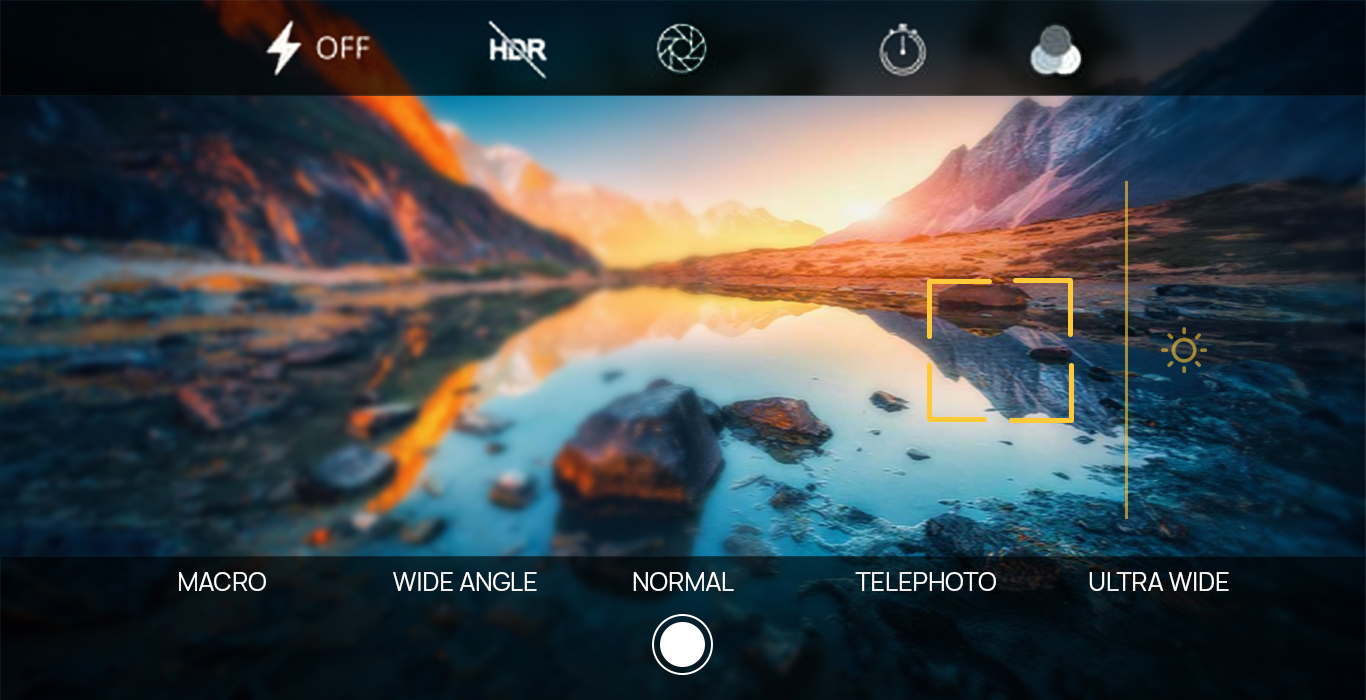Mastering Smartphone Photography with 4 Powerful Camera Lenses
The idea of photography has changed from using a manual, handheld DSLR camera to using modern smartphones, which can now take high-quality pictures and record films more easily than digital cameras.
Firstly, Let’s understand, how mobile camera works. The smartphone’s cameras are made of three basic parts, the first one is the ‘‘Camera Lens’’ that directs light into the phone camera. The second one is the ‘‘Sensor’’available inside the camera cover that converts the focused photons of light into an electrical signal and the third one is the “Software” that is installed that converts the electrical signals into the actual snap.
Instead of that, the camera lens is the crucial element inside the smartphone that determines the quality and functionality of the camera. With the latest technological developments, smartphone camera lenses have undergone substantial evolution over time, resulting in increased picture stabilization, enhanced low-light performance, and better zoom capabilities. The most common camera lenses which days nowadays used in smartphones Wide-angle angle, Ultra-wide angle lenses, Macro lens and Telephoto lenses which enables photo lovers to capture a wide variety of pictures. While many smartphone brands flaunt the number of lenses designed in their respective smartphone very less number of users are aware of the features of these lens types.
So, in this Innopedia Season 2 episode, we are going to talk about the type of camera lenses that are available in smartphones and their features.
- Wide-angle lens – This is one of the most commonly used lenses inside a smartphone. It is a primary lens in the smartphone that has been introduced in the past few years. It is a common lens that is used in capturing day-to-day normal-quality photographs. Apart from the rear camera, it is also available in front camera option mode for taking selfies or doing video calls.
In this category, Oneplus Nord 2 features a 32MP front camera with a wide-angle lens to capture great selfies in this segment.
- Ultra-wide angle lens – This camera lens is widely available in most of the latest smartphones. The ultra-wide-angle lens is ideal to capture panoramic view images. The shorter focal length with a depth of field of ‘117 – 123’ degrees allows the user to capture more surrounding background in the image or capture good quality landscape images.
The best overall smartphone in this category is Google Pixel 8 Pro followed by Samsung Galaxy S24 Ultra.
- Telephoto Lens – This is also the premium category lens nowadays available in high-end smartphones. A telephoto lens inside the smartphone camera enables to capture every minute detail of the subject or a scene when the user zooms in. With long focal length, supporting up to 2X of Optical Zoom, the telephoto lens magnifies the subject optically with minimal picture quality deterioration. The user can capture the photographs from their phone even when they are clicking the picture from a distance without even compromising on the quality. It is advised to use a tripod so that the smartphone is stable while clicking the picture.
This feature is nowadays available in multiple premium smartphones such as Samsung Galaxy S23, S22 Ultra, Xiaomi 14 Ultra Apple iPhone 15 Pro Max etc.
- Macro lens – This lens allows the user to capture close-up shots of a subject that is as close as 2cm and is widely used to capture the minute details of the subject. For nature photography and wildlife photography lovers, it is the best tool for them to capture a very close-up shot be it a season bird or a beautiful flower showing up its petals and leaves or sportsman in the match, all captured with minute details. This feature is available in recent smartphones as a ‘camera mode’ which can be selected by the user to capture the perfect close-up or capture the smallest details.
In this segment, the iPhone 15 Pro tops the category with macro lens mode to capture good-quality close-up images.
